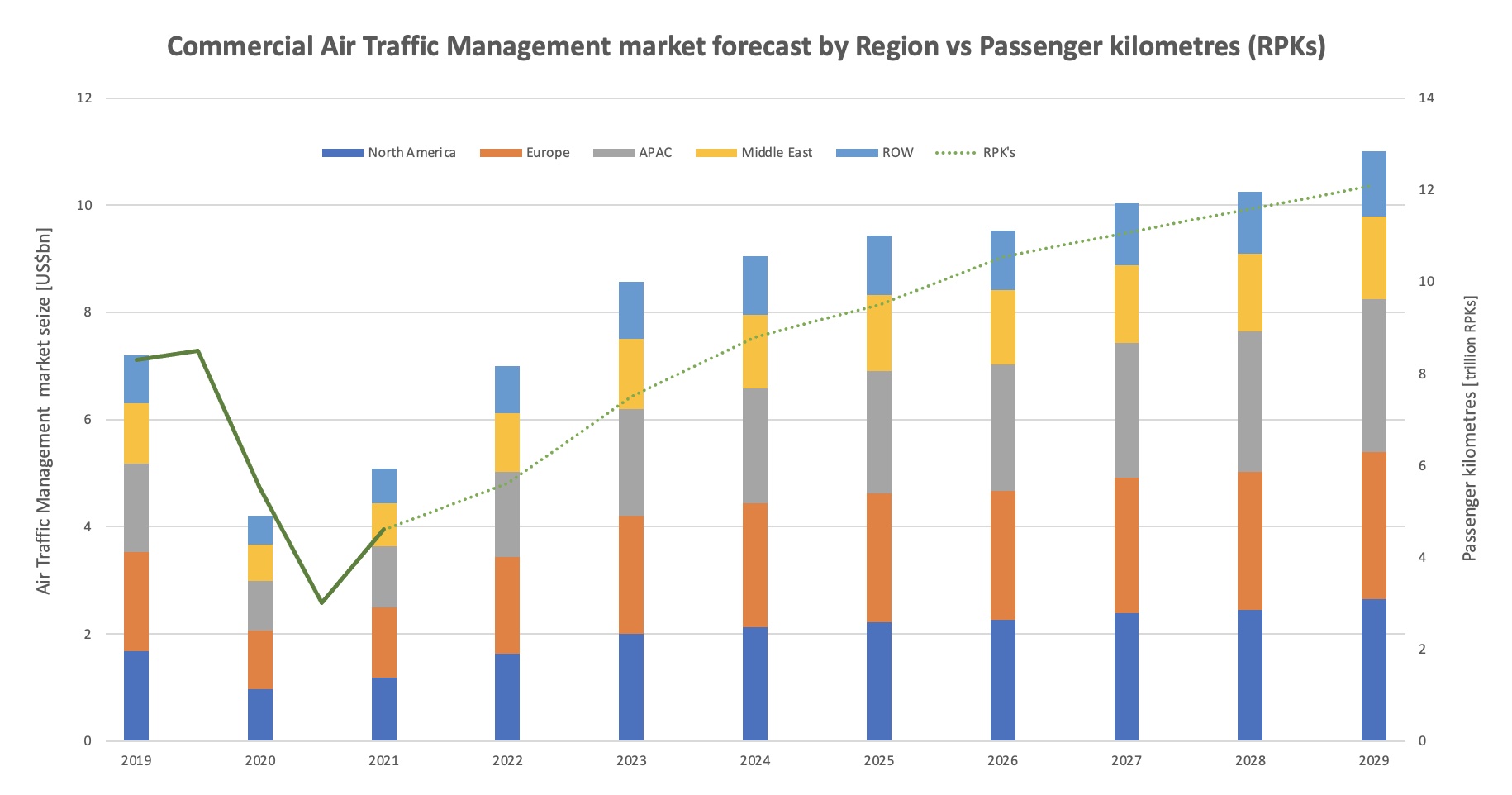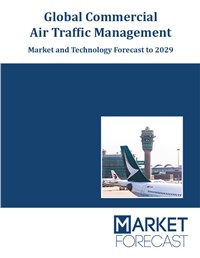The aviation infrastructure that facilitates air transport services for passengers and commodities includes air traffic management (ATM) and airports. ATM provides the connecting infrastructure that enables airplanes to travel safely between airports by providing air traffic control (ATC) and related services. ATM offers facilities that are required for safe and reliable air transportation by controlling the separation of aircraft and air traffic flows. The aviation industry is a dynamic structure of multiple interconnected components. ATMs and airports play a critical role in the competitiveness of airline services as well as their availability for passengers and freight. The ability of airplanes to operate safely and efficiently in airspace is dictated by the efficiency of the air navigation system and ATM facilities, as well as the equipment available in aircraft and pilot training. This has an impact on flight times and fuel burn. ATM has a direct effect on air transportation costs via charges, as well as an implicit effect on service efficiency, such as delays and inadequate routings that can be imposed on aviation industry.
ATC, aircraft traffic flow management, and airspace management are the significant functions wherein ATM coordinates air traffic in airspace. It is a dynamic function that depends on ever-evolving technology. Air traffic control is the method of separating planes in the sky as they fly and at airports where they take off and land. The sequencing of aircraft along air routes and at airports is known as air traffic flow management. The structure of airspace into air routes and control areas to accommodate traffic levels and needs is known as airspace management.
Air traffic management (ATM) technology is complex and evolving at a rapid pace. Moreover, technological developments, increase in number of air passengers, rise in number of airports, and a need for safer and secure air transport in developing countries is further boosting the growth of the market. Factors such as high cost of technology, and airborne equipment standards however, hinder the growth of the market to some extent. Increasing number of global aircraft movement and the launch of expansion programs for brownfield and new greenfield projects by many nations around the world, have created promising opportunities for the commercial air traffic management market to grow.

The market revenue for Global Commercial Air Traffic Management Market accounted for USD 4.21 billion in the year 2020, were it came from 7.2 billion in 2019, and it is anticipated to reach a value of around USD 11.00 billion by the year 2029. The market growth dynamics account for a CAGR of around 10.08% during the forecast period.
APAC is expected to dominate the Global Commercial Air Traffic Management Market in 2029 with a market value of around USD 2.86 billion owing to the increasing investment in this sector (Greenfield) coupled with a rise in daily air passenger numbers. The rising global investments for the expansion of existing airport infrastructures (Brownfield) in countries including China, India, South Korea, Japan, and Others in the APAC region is another factor that is expected to fuel the growth of the Global Commercial Air Traffic Management Market. Europe is expected to be the second-largest market with a value of around USD 2.75 billion. APAC is expected to be the fastest-growing market over the forecast period with a CAGR of around 11.94%.
The report is aimed at
- The key drivers, restraints, and challenges which are expected to shape the Global Commercial Air Traffic Management Market are covered in detail in the report.
- The key technologies which could have an impact on the Global Commercial Air Traffic Management Market have been covered in detail.
- The top ten countries have been analyzed in detail concerning its Air Movement, Air Transport Infrastructure Quality, and Recent Projects.
- The Porter’s Five Forces and the PEST Analysis of the Global Commercial Air Traffic Management Market have been covered in the report.
- The high growth markets have been identified in the Opportunity Analysis Chapter.
- The market has been forecasted from 2020- 2029 considering all the factors, which are expected to impact the market.
- The Scenario Analysis Chapter covers the key scenarios and their impacts on the forecast chapter.
Segmentation covered in this report
The market is segmented based on Region, Services, Components, Airport Size, Type, and Offering:By Region
- North America
- Europe
- APAC
- Middle East
- ROW
By Services
- Air Traffic Services
- Airspace Management
- Air Traffic Flow Management
- Aeronautical Information Management
By Components
- Communication
- Navigation
- Surveillance
- Automation
By Airport Size
- Small
- Medium
- Large
By Type
- Brownfield
- Greenfield
By Offering
- Hardware
- Software
Country Analysis
- United States of America
- China
- France
- United Kingdom
- Netherlands
- Canada
- Germany
- Japan
- Turkey
- Mexico
Reasons to Buy
- The new players in the Global Commercial Air Traffic Management Market and the potential entrants into this market can use this report to understand the key market trends that are expected to shape the market in the next few years.
- The Market Analysis Chapter covers the Key Drivers, Restraints, and Challenges of the Commercial Air Traffic Management Market. The PEST and Porter’s five forces are covered in detail in this report.
- The key technologies that could impact the Global Commercial Air Traffic Management Market have been covered in detail.
- The report can be used by the sales and marketing team to formulate their medium- and long-term strategies and to reconfirm their short-term plans.
- The report would help the sales and the marketing team to understand the key segments across the top ten countries which have been analyzed in the report.
- The Opportunity Analysis chapter identifies the key hot spots within the Global Commercial Air Traffic Management Market.
- The company profiles include financials, latest news, and SWOT analysis for ten companies.
Who is this report for?
Financial Institutions: Financial institutions such as financial intermediaries and banking institutions can use this report to assess their financing or investment strategies.Department of Information Technology: The Department of Information Technology could use this report to understand various technical indicators of the top ten countries. This would give them an overall perspective of potential markets.
Decision Makers: The future investment and technology focus decisions could be formulated based on the inputs of this report.
Other Organizations: Various other NGO and Non- Governmental organizations involved with the research and development department for upcoming technologies can use this report to support their research.



